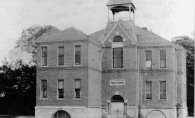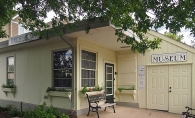While we’re sitting down to our carefully decorated tables, carving our delicately baked holiday ham, it’s unlikely that we’re considering how far we’ve come from the first families to settle in the lake area. We’ve heard the story of the first Thanksgiving in Massachusetts, but what about the first holidays of the Lake Minnetonka settlers of yore?
The earliest white settlers to Lake Minnetonka had to learn how to live off the land—and fast. The trappers and settlers who chose to listen to the Dakota people learned the edible plants of the area, so they didn’t have to live exclusively on their known staples of dried corn and pork. Besides the abundant fish, the lake provided servings of wild rice. Gleason’s Lake and Gray’s Bay were once covered with wild rice plants. In fact, according to Colonel John P. Owns, who wrote in The Weekly Minnesotian in 1852, Gray’s Bay was “scarcely worthy the name of ‘lake’ as the greater portion of its surface [was] covered with a thick growth of wild rice.”
One of the sweetest lessons the Native Americans taught the pioneers was how to boil down maple sap to make syrup. In 1853, Hezekiah Brake set up troughs under 500 maple trees to collect the sap along Lake Minnetonka. He didn’t have big enough containers, so he used the canoes that he’d bought from Chief Shakopee and sold a canoe of syrup in St. Anthony, Minn., for $200.
The settlers held “sugaring parties,” which consisted of boiling down the sap, and were festive occasions where no participant escaped the party without a layer of black soot dusting their skin and clothes. With snow still on the ground, settlers made an early form of ice cream by carameling syrup: They mixed snow with drops of syrup and then beat the sweet mixture until it turned white.
Settler Laura Negus Howe wrote in the 1850s that the maple syrup they made at the lake was used as sweetener in just about everything. Her favorite concoctions involved putting doughnut batter into a large hot iron pan and then cracking eggs into boiling syrup, beating the mixture and pouring it over the doughnuts to make “Yankee pie.” The less inventive settlers skipped these fancy recipes and just used the syrup as mixer to make brandy hot toddies.
For meat, the settlers tried to bag a deer whenever they could, but often had to rely on smaller creatures for feasts. Squirrel stew helped keep away the hunger pangs, as the creatures were plentiful and easy to catch. William Dudley’s hotel in Wayzata bragged about its woodchuck stew and “baked ’coon.” In Minnetonka, an early white settler, Eli Pettijohn, recalled an especially unusual dinner at the house of Henry Sibley in Mendota. He ate a “boss” of buffalo—the hump on the back of a young male bison—with a side dish of what he thought was dried beef. It turned out to be boned, dried beaver’s tail, which Sibley bragged about, saying he’d brought in more than 5,000 beavers over the course of the year.
In spite of the potential for feasts on unusual delicacies on Lake Minnetonka, one peninsula stands out among this strange cornucopia: Starvation Point. The name derives from a white trapper whom the Dakota called “hairy-faced man” and had lived among the Indians for decades (perhaps one of the earliest Europeans in the area). When he hadn’t been seen for a year or two, the Dakota Indian called White Crow went looking for him and reported back, as recorded in a book published by the Excelsior–Lake Minnetonka Historical Society called Tales from Tonka: Stories of People Around Lake Minnetonka, “Hairy man, he dead. No meat, no fur, no blankets, wolves no eat him, me cover him up.”
After that tragedy, George Brackett bought the peninsula. In combat with General Henry Sibley and Franklin Steele, Brackett, a Civil War cook, had been sent back from fighting the Confederate army to combat the Dakota in Minnesota in 1862. During the war, to ensure full stomachs after a long day of fighting, Brackett would bury his bean cauldrons in a smoldering pit and the Dakota wouldn’t notice dinner cooking underground. When Brackett and his squadron returned at night, they’d have enough beans to feed 300 men and a spot on the ground warm enough for sleeping.
Brackett brought his bean-hole cauldrons with him to “Starvation Point” and renamed the remaining area Orono. The Minnetonka Yacht Club made him its first commodore and he had famous bean-hole feeds for 300 sailors and crews. No more starvation here.
While we’re sitting down to our carefully decorated tables, carving our delicately baked holiday ham, it’s unlikely that we’re considering how far we’ve come from the first families to settle in the lake area. We’ve heard the story of the first Thanksgiving in Massachusetts, but what about the first holidays of the Lake Minnetonka settlers of yore?
The earliest white settlers to Lake Minnetonka had to learn how to live off the land—and fast. The trappers and settlers who chose to listen to the Dakota people learned the edible plants of the area, so they didn’t have to live exclusively on their known staples of dried corn and pork. Besides the abundant fish, the lake provided servings of wild rice. Gleason’s Lake and Gray’s Bay were once covered with wild rice plants. In fact, according to Colonel John P. Owns, who wrote in The Weekly Minnesotian in 1852, Gray’s Bay was “scarcely worthy the name of ‘lake’ as the greater portion of its surface [was] covered with a thick growth of wild rice.”
One of the sweetest lessons the Native Americans taught the pioneers was how to boil down maple sap to make syrup. In 1853, Hezekiah Brake set up troughs under 500 maple trees to collect the sap along Lake Minnetonka. He didn’t have big enough containers, so he used the canoes that he’d bought from Chief Shakopee and sold a canoe of syrup in St. Anthony, Minn., for $200.
The settlers held “sugaring parties,” which consisted of boiling down the sap, and were festive occasions where no participant escaped the party without a layer of black soot dusting their skin and clothes. With snow still on the ground, settlers made an early form of ice cream by carameling syrup: They mixed snow with drops of syrup and then beat the sweet mixture until it turned white.
Settler Laura Negus Howe wrote in the 1850s that the maple syrup they made at the lake was used as sweetener in just about everything. Her favorite concoctions involved putting doughnut batter into a large hot iron pan and then cracking eggs into boiling syrup, beating the mixture and pouring it over the doughnuts to make “Yankee pie.” The less inventive settlers skipped these fancy recipes and just used the syrup as mixer to make brandy hot toddies.
For meat, the settlers tried to bag a deer whenever they could, but often had to rely on smaller creatures for feasts. Squirrel stew helped keep away the hunger pangs, as the creatures were plentiful and easy to catch. William Dudley’s hotel in Wayzata bragged about its woodchuck stew and “baked ’coon.” In Minnetonka, an early white settler, Eli Pettijohn, recalled an especially unusual dinner at the house of Henry Sibley in Mendota. He ate a “boss” of buffalo—the hump on the back of a young male bison—with a side dish of what he thought was dried beef. It turned out to be boned, dried beaver’s tail, which Sibley bragged about, saying he’d brought in more than 5,000 beavers over the course of the year.
In spite of the potential for feasts on unusual delicacies on Lake Minnetonka, one peninsula stands out among this strange cornucopia: Starvation Point. The name derives from a white trapper whom the Dakota called “hairy-faced man” and had lived among the Indians for decades (perhaps one of the earliest Europeans in the area). When he hadn’t been seen for a year or two, the Dakota Indian called White Crow went looking for him and reported back, as recorded in a book published by the Excelsior–Lake Minnetonka Historical Society called Tales from Tonka: Stories of People Around Lake Minnetonka, “Hairy man, he dead. No meat, no fur, no blankets, wolves no eat him, me cover him up.”
After that tragedy, George Brackett bought the peninsula. In combat with General Henry Sibley and Franklin Steele, Brackett, a Civil War cook, had been sent back from fighting the Confederate army to combat the Dakota in Minnesota in 1862. During the war, to ensure full stomachs after a long day of fighting, Brackett would bury his bean cauldrons in a smoldering pit and the Dakota wouldn’t notice dinner cooking underground. When Brackett and his squadron returned at night, they’d have enough beans to feed 300 men and a spot on the ground warm enough for sleeping.
Brackett brought his bean-hole cauldrons with him to “Starvation Point” and renamed the remaining area Orono. The Minnetonka Yacht Club made him its first commodore and he had famous bean-hole feeds for 300 sailors and crews. No more starvation here.









